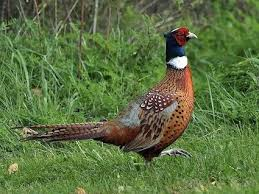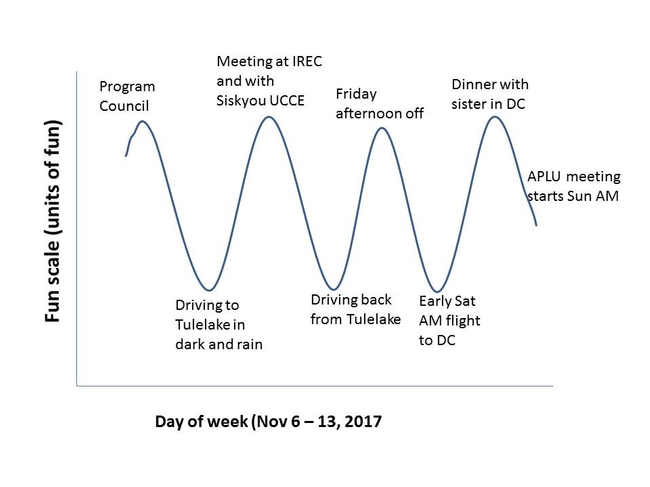It turns out I had two consecutive hours of unscheduled time on Tuesday. I was at a loss what to do – first I wondered if I was in some sort of time warp and actually late for a meeting. Then I thought I had misread my calendar. This progressed to wondering if I had been fired or perhaps it was Saturday and there were just a lot of people working the weekend in the Davis building. After about 4 minutes of this I embraced the time and got some work done! Before I knew it, it was time to go to Program Council for the rest of the day. Overall, last week was a series of ups and downs; of time that was rather fun and then times of not-so-fun. Good meetings, not-so-fun travel, now holding out hope that the APLU meeting breaks the cycle.
While the drive up to Tulelake was not ideal, the daylight drive back lead to spotting a few ring-necked pheasant, a species I have missed and was really excited to see alongside the road. Growing up in New York State, there was a field across the street from our house that was owned by the Naval Reserve and there were always pheasant there. Then I moved to Florida and didn't see any. From there I move to Iowa where they were quite abundant, followed by Michigan where I never saw a single one. So it seems I have cycled back to a state where the ring-necked pheasant calls home. Thinking about this cycle had me wondering about the CA population of pheasants because in Iowa there is a lot of talk about the bird and projected populations. So I did some digging and learned a few things, including the fact that I grew up in New York when populations were at their peak and they are actually difficult to find now. And apparently I was fortunate to see a few in CA last week. So it seems the Midwest (sans Michigan) is where most are now found, due to habitat and grain fields.

At the APLU meeting, one of the speakers talked about Project DrawDown which emphasizes 12 steps to carbon neutrality. I may need to look up the site but I'm not sure there is much life cycle assessment data available for some of the strategies. The speaker also referenced a Nature article by Jonathan Foley, who I mentioned in a recent post, that is focused on food footprints.
In the meantime, I need to get VP Humiston the grant recommendations that came from Program Council and tackle a few other items that have deadlines on them. Fortunately I have some flight time to use towards 2 manuscripts I need to edit and send back to a graduate student who is trying to wind down his program.
Still not bored.
